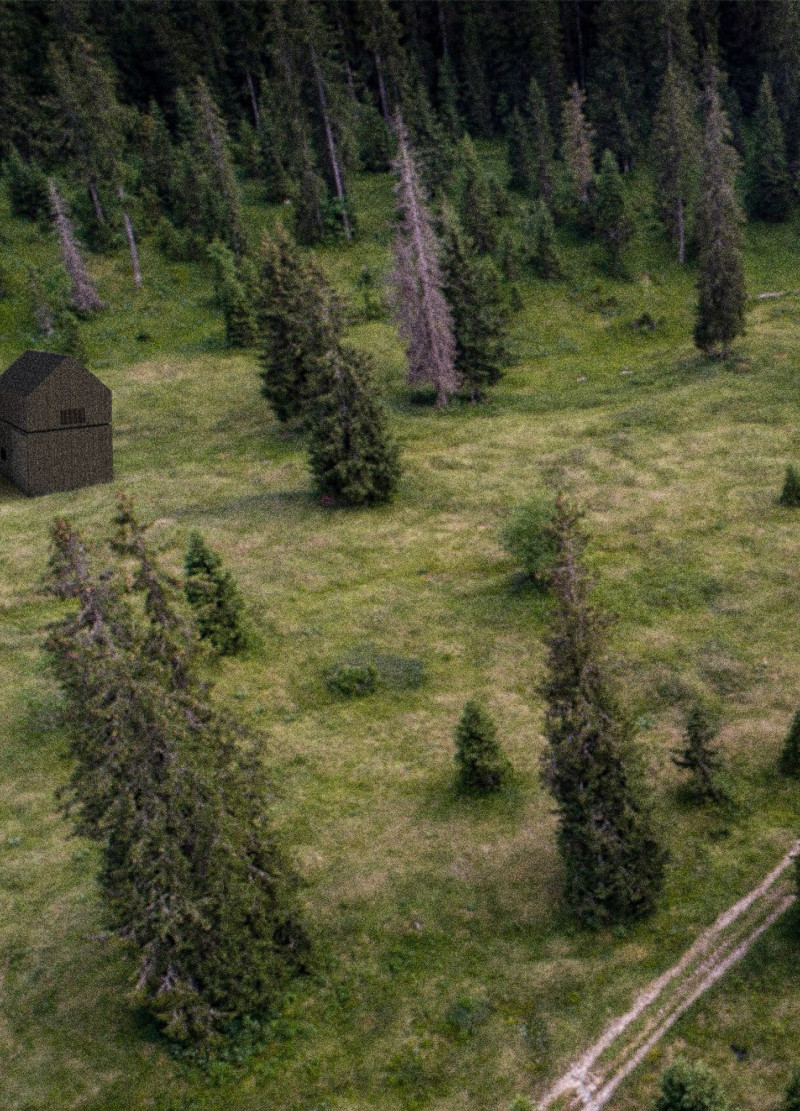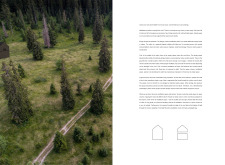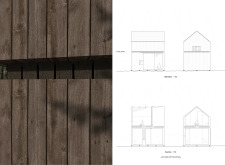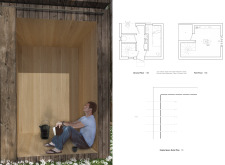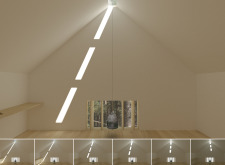5 key facts about this project
The cabin features a rectangular form that is modest in size, designed to minimize its impact on the landscape. The primary material is wood, chosen for its thermal properties and aesthetic compatibility with the surroundings. The dark-stained wooden façade allows the structure to merge with the forest, highlighting the design’s intent to provide a visual and spatial connection with the natural world.
Large windows strategically placed throughout the design foster an abundance of natural light and unobstructed views, while also enhancing the feeling of openness and fluidity between interior and exterior spaces. The layout includes essential living areas, such as a kitchenette, bedroom, and a reading nook. Each space is intentionally designed to promote comfort and functionality without ostentation.
Unique Design Elements and Meditation Focus
A distinguishing characteristic of the "Empty Space Cabin" is its focus on meditation and reflection. The central “empty space” is purposefully designed to facilitate mindful practices and introspection. This area features intentionally designed gaps between wooden boards that serve not only as ventilation but also as acoustic elements to amplify soothing natural sounds, contributing to a serene atmosphere.
The integration of a meditation terrace on the upper level further highlights the project’s dedication to contemplative activities. This elevated space provides varying perspectives of the environment, encouraging users to engage with their surroundings in diverse ways. The thoughtfulness in providing both sheltered and open areas enhances the versatility of the cabin as an introspective retreat.
Materiality and Structural Integration
The material palette of the project plays a pivotal role in its architectural integrity. Wood is widely used for both structural and aesthetic purposes, often seen in the walls, ceilings, and flooring. Additionally, glass elements are incorporated to optimize the influx of natural light and maintain continuity with the exterior views. The careful selection of materials supports the cabin’s environmental objectives while ensuring durability and minimal maintenance.
Overall, "Empty Space Cabin" represents a thoughtful approach to architecture that prioritizes the user experience and interaction with nature. Its design emphasizes simplicity, functionality, and a unique focus on meditation, providing an ideal setting for personal reflection.
For further exploration of the architectural plans, designs, and sections that elucidate the project’s unique elements, readers are encouraged to delve into a detailed project presentation. This will provide deeper insights into the architectural ideas and innovative approach that define the "Empty Space Cabin."


